Lhoka in Tibet takes more measures regarding poverty relief

Photo shows the better-off standard ecological village of Magmang on the 16th of April in the Legpo Ditch in the Tsona County in Lhoka City of the Tibet Autonomous Region.
The village was built on the base of a swamp, it is composed of 40 households that newcomers and 29 households that had been originally living here. In the recent years, the Lhoka City has taken synthesized measures such as relocation, industrial support, transfer of employment, skill training sessions and ecological compensation as well as measures for developing the collective economy to help the peasants and herdsmen realize poverty relief, therein having realized poverty reduction for 79,000 people and job opportunity creation for 10,700 people. It was reported by the economy research center belonging to the Lhoka City government, that up until the end of 2015, the average disposable incomes per annum of the urban citizens and rural peasants and herdsmen numbered to 24,000 RMB and 8,990 RMB respectively making them 1.7 times and 2.1 times that of those in 2010, average growth rates per annum account to 11% and 16%. During the 13th Five-Year Plan, the growth rate of average disposable income per annum of peasants and herdsmen will maintained a level of 13% plus, so it is predicted that the 2018 geared poverty-relief task will fulfill in advance.
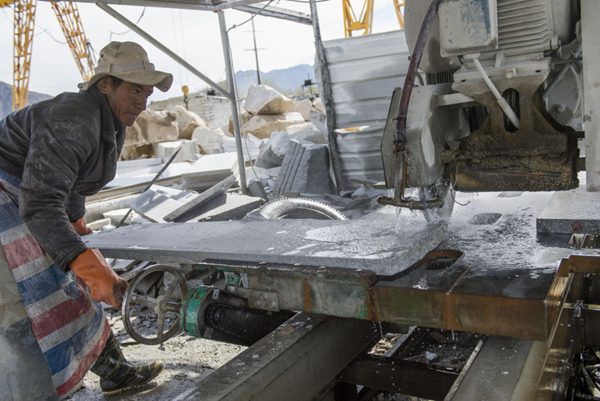
Photo taken on May 18 shows a worker makes stone in a sand-rock factory in the Dixin Village of the Kyerpa Township in the Nedong County of the Lhoka City. It was introduced that many of the carpenters from this village have changed their occupation into the stonemen work, producing highly demanded products such as Dali stone boards, stone vases, Tibetan-style stone tables, Tibetan-style stone incense burners.
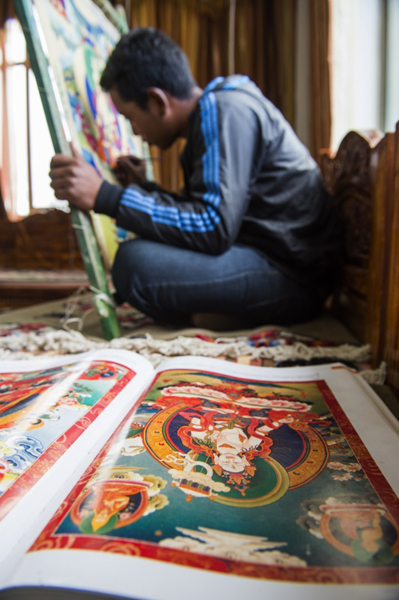
Photo taken on May 17 shows a student takes a training course regarding Thangka painting skills, in the Hongxing compound of the Kyishong Town in the Gangkar County of the Lhoka City..
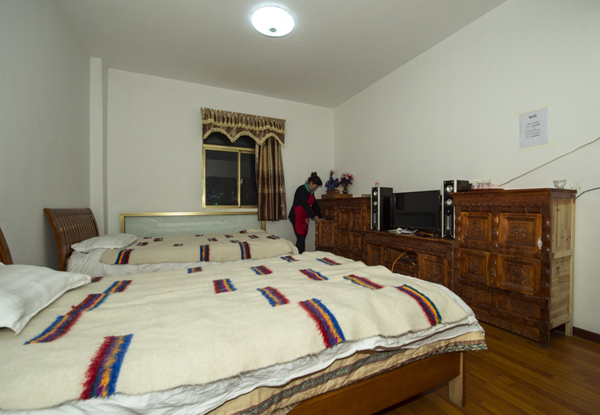
Photo taken on April 15th shows Quji, a Moinba girl from the Magmang Township of the Tsona County belonging to the Lhoka City opened a two-story “home hostel” in the ecological standard better-off village of Magmang; she is seen cleaning the guest room in her “home hostel”.
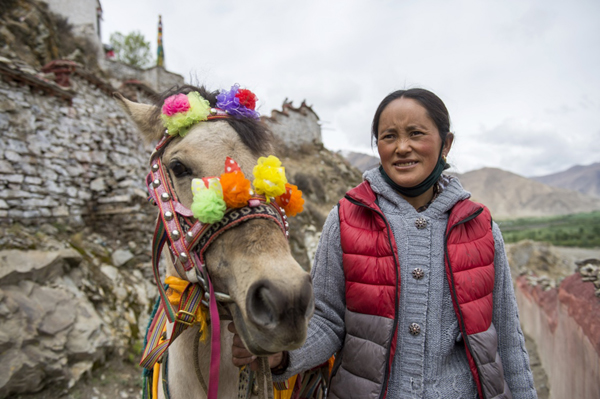
Photo taken on May 18 shows Dawa, who runs a horse-renting business in the Yabulakang Scenic Spot at the Lhoka City, and her 4-year- old horse, Zhuoma, in a picture taken on a mountain path. Dawa told the journalists that during the tourist high season, running a horse-renting business can bring about a certain amount of income for her family.

Photo taken on May 18 shows a picture of an “agri-tourism” at the bottom of Yabulakang, the boss (on the right) takes a souvenir photo in the store.
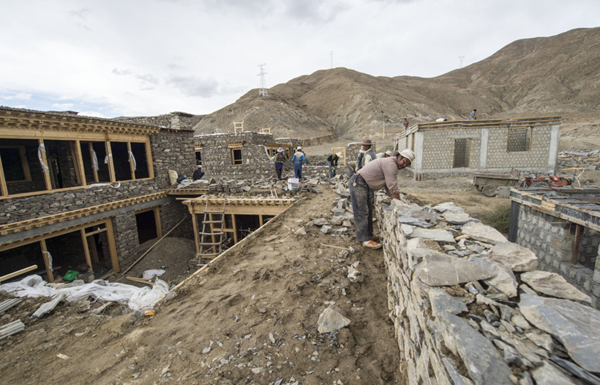
Photo taken on May 17 shows the villagers in the Hongxing compound of the Kyishong Town in the Gangkar County of the Lhoka City do the relocation project.
Your Comment
Name E-mailRelated News
-
;
-
-

-
Intangible cultural heritage becomes poverty alleviation tool in L
Ze Tier, or Tsethang wool serge, is a handmade textile art based on Tibetan Pulu, in which the warp and woof are gradually changed from coarse to fine and the texture from thick to thin.
-
-
-

-
Ongor Festival celebrated in Lhoka, Tibet
As the crop-ripening time approaches, Tibetan farmers begin to celebrate the Ongkor Festival, which is prevalent in rural areas, especially in those areas along the middle reach of the Yarlung Zangbo River and Lhasa River Valley.
-
-
-
Ongor Festival celebrated in Lhoka, Tibet
As the crop-ripening time approaches, Tibetan farmers begin to celebrate the Ongkor Festival, which is prevalent in rural areas, especially in those areas along the middle reach of the Yarlung Zangbo River and Lhasa River Valley.
-
Based in Lhasa, Tibet Vista is a Tibet travel agency that specialized in Tibet permit, and Tibet tours for both private and group travelers at a local price!
•4 Days Lhasa City Group Tour from USD 460 •8 Days Everest Base Camp Group Tour from USD 850 •15 Days Mt.Kailash Group Tour from USD 1780 •2016 Tibet Train Tours from Beijing, Shanghai, Chengdu, Xining,etc










